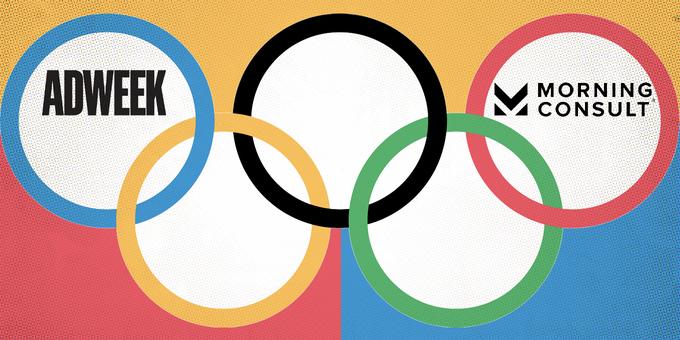The 2021 Summer Olympics, which run from July 23 to August 8, are set to be the first Olympic Games that are broadcast live in
high dynamic range (HDR) video
. Although many films and TV shows are available in HDR—via streaming services, the Ultra HD disc format, and some cable and satellite providers—live sports coverage in HDR has been rare. Judging from what we’ve seen demoed at trade shows, we think HDR can offer big benefits with sports content, and we’ve been eagerly waiting for it to become more available. To complement the improved video, the Tokyo Games are also being broadcast in
Dolby Atmos
sound to deliver a more immersive audio experience.
What can you watch in HDR, and what gear do you need to fully experience the Olympics this way in your home? Here’s what we know.
The benefits of HDR video and Dolby Atmos audio
Once you’ve seen sports in high dynamic range, you might wonder why TV companies haven’t been using it to show off their new TVs for years. HDR’s ability to show more details in shadows while simultaneously producing especially bright highlights can make sunny outdoor sports look more like they do in person than they ever have before. Outdoor sports can showcase the full benefits of
ultra-bright LCD TVs
and can make them look even better than
OLED TVs
. Although all of the Olympics will look better in HDR, we expect that outdoor sports like track and field will really shine (pun intended).
As for the sound quality, Dolby Atmos can put you in the middle of an environment, such as a stadium, and let you hear sounds all around you. How well this effect will translate to an Olympics without spectators (they are currently prohibited) remains to be seen.
Which events will be shown in HDR?
NBC says
that its nightly prime-time coverage, as well as live coverage on the Golf Channel and Olympic Channel, will be available in HDR. The opening and closing ceremonies will also be shown in HDR, and they should look great considering that they’re at night and we would expect (based on past ceremonies) the use of lots of bright lights. Gymnastics, track and field, swimming, diving, beach volleyball, golf, and tennis will be among the sports shown in 4K HDR.
NBC’s signal technically will be in 4K resolution, and it will use some 4K cameras, but we’ve confirmed
reports
that the video source will actually be lower-resolution 1080p HDR that is upscaled to 4K. Although upscaled 4K may not look as detailed as native 4K, the streams are still likely to look sharper than NBC’s standard 1080i HD broadcasts thanks to the better compression schemes used for 4K, and of course the HDR benefits should be the highlight.
What you need to watch the Olympics in HDR
Watching the Olympics in HDR requires an HDR-capable TV (
some are better than others
) and an HDR-capable source such as a 4K cable or satellite box,

streaming media player
, or smart-TV platform. For Atmos sound, you need a source device that can output the Atmos format, as well as an Atmos-capable home theater system (with a compatible
AV receiver
and
surround-sound speaker system
) or
soundbar
.
Although NBC will offer the 4K HDR feed to its US distribution partners, it’s likely that not all of them will make that feed available to customers. Finding the 4K HDR feeds should be easiest for people who have an
X1 set-top box
from Comcast (which owns NBCUniversal), though many other people with a streaming-TV, cable, or satellite subscription should be able to watch, as well. Comcast has
confirmed
that the 4K HDR content will be available through the X1 box and that it will be in Dolby Vision HDR with Dolby Atmos sound. As long as your X1 box and HDR TV are set up correctly and they’re tuned to the 4K HDR feed, you should be good to go. In addition, Comcast will group all the Olympics content together in one viewing portal to make it easier for you to find what you want to watch.
If you don’t have an X1 box from Comcast, the easiest way to watch in HDR is likely through the NBC family of apps, including those for NBC and NBC Sports, either on a smart HDR TV with the apps built in or via a dedicated media streamer. Through one of these apps, you’re likely to get the more basic HDR10 signal, not Dolby Vision (you can read about the difference in this
CNET article
), but we haven’t had the chance to test this ourselves. And which audio format you get depends on whether your media streamer can output Atmos audio (some can’t, but
our picks
can). These apps work only if you subscribe to a cable, satellite, or streaming-TV service since they need to authenticate your account with your provider, but they are likely the easiest way to view the Olympics in HDR.
YouTube TV also offers a 4K streaming tier, but it’s brand-new, and we’ve read that
getting it to work in HDR
can be challenging. It seems to work best on the Roku Ultra media streamer; the Apple TV doesn’t support the 4K, 60 Hz HDR content that YouTube TV streams right now. But if you can’t get the HDR feed directly within YouTube TV, you still can use the NBC apps described above by signing in with your YouTube TV credentials.
Other providers, such as DirecTV and FuboTV, have told us they will offer a 4K feed, but not in HDR. We haven’t gotten confirmation from Dish Network or any other cable providers regarding their HDR plans, but we will update this article if we learn more.
Thanks to HDR and Dolby Atmos, the Summer Olympics should look and sound better than they ever have before—as long as you make sure to watch the correct channel or stream. It would be a shame, if you have all the AV pieces in place, to miss out on the HDR feed just because it’s not the default option to watch.









